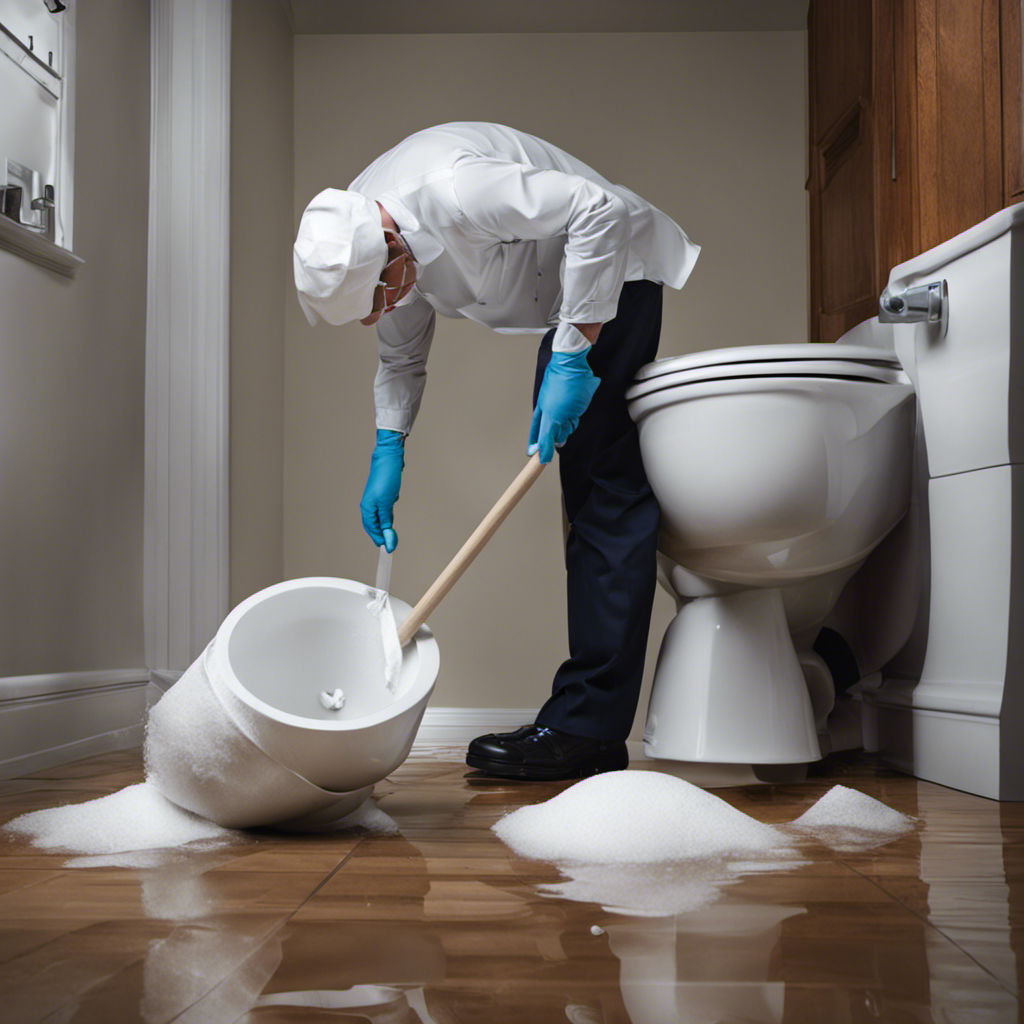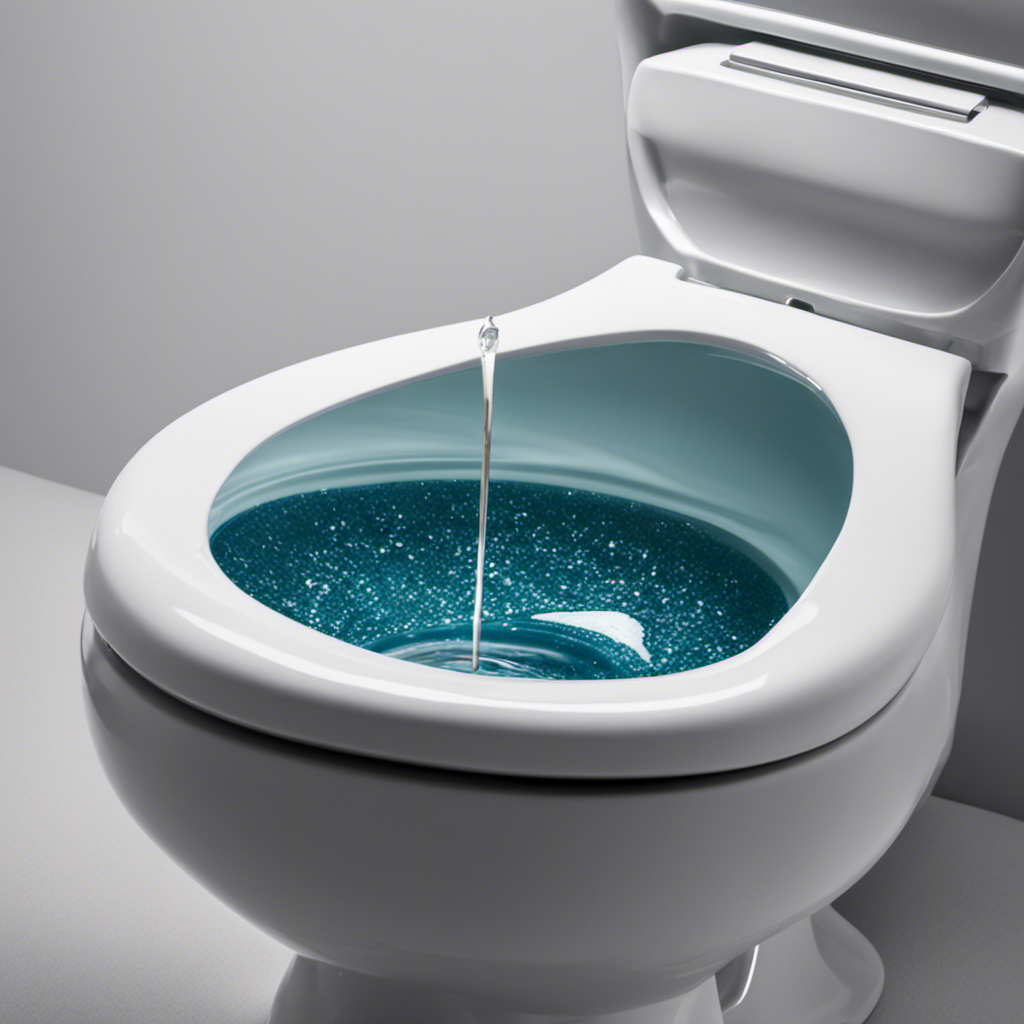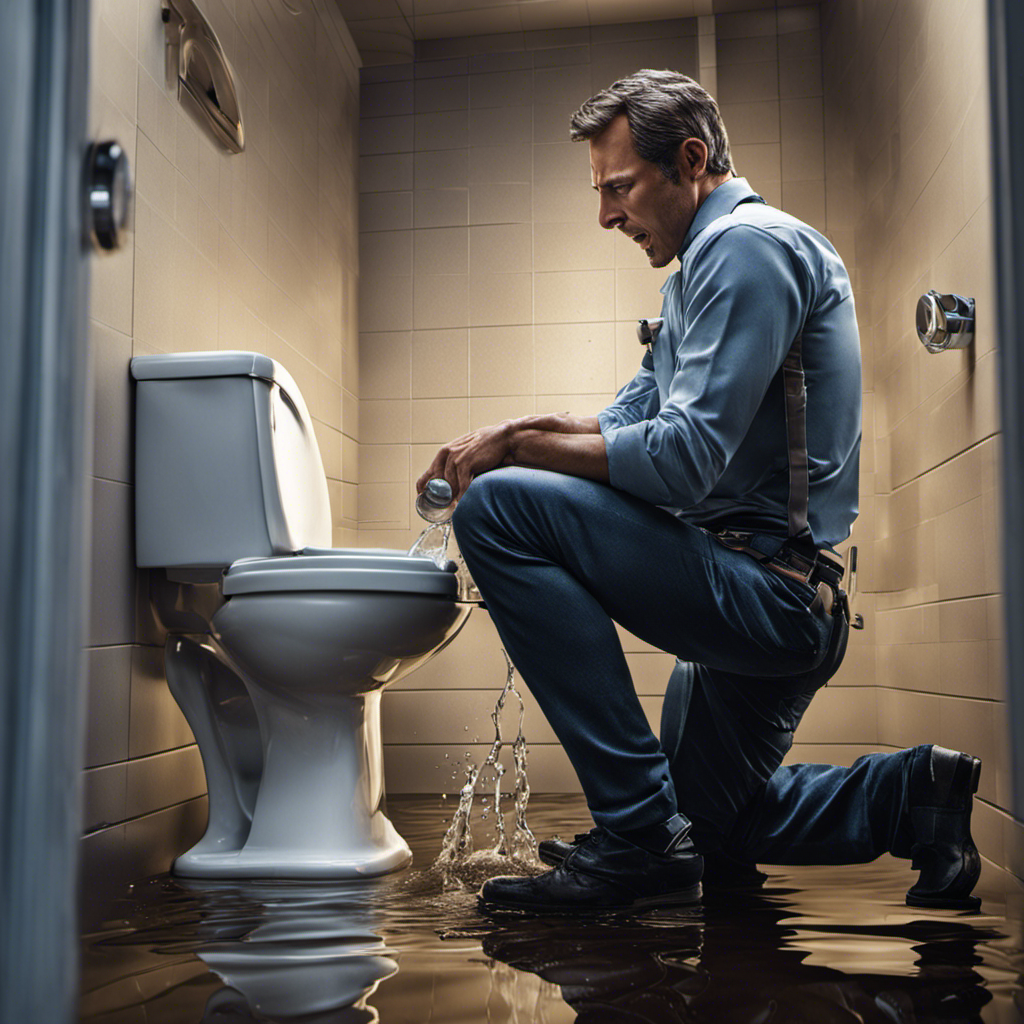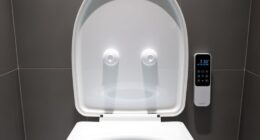Did you know that toilet overflows are one of the most common plumbing issues homeowners face? If you’ve ever experienced this messy situation, you know how important it is to act quickly and confidently.
In this article, I will guide you through the necessary steps to handle a toilet overflow with ease. From identifying the issue to preventing future overflows, you’ll gain the knowledge and practical tips to tackle this problem head-on.
So, let’s dive in and learn what to do if your toilet overflows.
Key Takeaways
- Shut off the water supply by turning the shut-off valve clockwise near the base of the toilet.
- Clear the blockage using a plunger or a toilet auger if plunging doesn’t work.
- Clean up the overflowed water with paper towels and sanitize the affected area to prevent contamination.
- Prevent future overflows by regularly maintaining the plumbing system, checking the water level in the tank, and being mindful of what you flush down the toilet.
Identifying the Issue
Now, you need to figure out what’s causing the toilet to overflow. There are several common causes that can lead to this frustrating situation.
One possible cause is a clog in the toilet drain. This can happen when too much toilet paper or other objects are flushed down the toilet.
Another common cause is a malfunctioning float valve or fill valve, which can result in excessive water entering the toilet bowl. Signs of a potential overflow include slow drainage, gurgling sounds, and water rising to the rim of the bowl.
If you notice any of these signs, it’s important to take action quickly to prevent further damage. In the next section, I will guide you on how to shut off the water supply to the toilet in order to stop the overflow.
Shutting off the Water Supply
First, you’ll want to locate and turn off the water supply to prevent any further flooding. To do this, look for the shut-off valve near the base of the toilet. It’s usually a small lever or knob that you can turn clockwise to shut off the water flow.
By isolating the leak, you can minimize the damage caused by the overflowing toilet.
Once the water supply is turned off, it’s important to address the issue promptly. Depending on the severity of the problem, you may need to contact an emergency plumber who can provide professional assistance. They have the skills and knowledge to fix the problem and prevent it from happening again in the future.
Clearing the Blockage
Once you’ve shut off the water supply, you can start clearing the blockage.
Unclogging a toilet can be a messy task, but with the right techniques, you can save yourself the hassle of calling a plumber.
The first step is to grab a plunger and position it over the drain hole. Make sure there is enough water in the bowl to cover the suction cup of the plunger.
Plunge vigorously up and down for a few minutes to create pressure and dislodge the blockage.
If plunging doesn’t work, you can try using a toilet auger. Insert the auger into the drain hole and twist it clockwise to break up the clog.
If all else fails, it might be time to call a plumber for professional assistance.
Cleaning up the Overflow
To clean up the overflow, use paper towels to absorb any water on the floor. Once the initial mess is cleaned up, it’s important to properly sanitize the area to prevent any contamination. Here are some cleaning techniques and safety precautions to follow:
- Use a disinfectant cleaner to thoroughly clean the affected area.
- Pay special attention to corners and crevices where bacteria can hide.
- Wear gloves and protective eyewear to avoid direct contact with the contaminated water.
- Dispose of all the used paper towels and cleaning materials in a sealed plastic bag.
- Wash your hands thoroughly with soap and warm water after cleaning.
By following these cleaning techniques and safety precautions, you can ensure that the affected area is properly cleaned and sanitized.
Now, let’s move on to preventing future overflows.
Preventing Future Overflows
To prevent future overflows, it’s important to regularly inspect and maintain the plumbing system in your home. By following a few simple maintenance tips, you can avoid the inconvenience and mess of a toilet overflow.
Firstly, check the water level in the tank regularly to ensure it’s at the correct level. If it’s too high, adjust the float valve to prevent overflow.
Secondly, be mindful of what you flush down the toilet. Common causes of clogs include excessive toilet paper, feminine hygiene products, and flushable wipes.
Lastly, consider scheduling professional plumbing inspections at least once a year to identify and address any potential issues before they become major problems.
Frequently Asked Questions
How Do I Fix a Toilet That Won’t Flush Properly?
When my toilet won’t flush properly, I check the toilet tank to ensure the water level is correct and make sure there’s no clog in the drain. If necessary, I use a plunger to clear any blockage.
What Should I Do if My Toilet Is Leaking?
If my toilet is leaking, I should take immediate action to prevent further damage. Common causes of leaks include a faulty valve or a cracked pipe. Regular maintenance and inspections can help identify and address issues early on.
Can I Use Chemical Drain Cleaners to Clear a Toilet Blockage?
I wouldn’t recommend using chemical drain cleaners for a toilet blockage. Instead, try using plungers effectively to clear the blockage. If that doesn’t work, there are alternative methods available for clearing toilet blockages.
Is It Necessary to Remove the Toilet From the Floor to Clear a Blockage?
If your toilet overflows, it is not always necessary to remove it from the floor to clear a blockage. Common causes of toilet overflows include clogs in the drainpipe or a malfunctioning flapper.
How Often Should I Have My Toilet Inspected to Prevent Future Overflows?
To prevent future overflows, it’s important to have regular toilet inspections. The frequency depends on factors like usage and age of the toilet. Look out for signs like slow drainage or water backups.
Conclusion
In conclusion, when faced with a toilet overflow, it is crucial to swiftly and skillfully tackle the trouble. Turn off the water supply, clear the clog, and clean up the mess meticulously.
Remember, prevention is paramount to protect against future floods. Practice proper maintenance to keep your toilet functioning flawlessly.
By following these steps, you can conquer any toilet troubles and triumphantly triumph over troublesome toilets. Stay informed, stay prepared, and stay in control of your porcelain throne.










